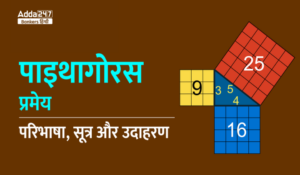अंग्रेजी, व्याकरण और शब्दावली के नियमों और अपवाद से बनी है। यह उन छात्रों के लिए बहुत बड़ा मुद्दा है जिनके पास अंग्रेजी में आत्मविश्वास की कमी है। इसलिए, छोटे भ्रामक शब्दों और नियमों के साथ आपकी सहायता करने के लिए, Adda247 आपके इस पोस्ट के साथ आपके सभी डाउट को दूर करने के लिए एक नया ट्रेंड शुरू कर रहा है। मंगलवार और शुक्रवार को उदाहरण और स्पष्टीकरण के साथ 5 नियम पब्लिश किए जाएंगे। आओ यहाँ सीखें।
आइये, बेसिक्स के साथ यानी Punctuation से शुरू करते हैं, अच्छे राईटिंग स्टाइल इसी बात से सम्बन्धित है की आप अपनी भाषा को किस प्रकार सजा कर लिखते हैं, जिसके लिए English में punctuation सबसे ज्यादा जरूरी है. इससे ही वाक्य का अर्थ बदल जाता है, कि आप इसे कैसे प्रयोग करते हैं.
1. Apostrophes
They are tricky gestures. Sometimes they form possessives. Sometimes they form contractions.
(a) Contraction – shortened form of a word or group of words. It omits certain letters or sounds.
e.g.,
– She would=She’d
– They are=They’re
– They cannot=They can’t
– You have=You’ve
– something = somethin’
– you will / You all = y’all
– the ’90s = the 1990s
(b) Possessives – probably cause the most of the confusion. Variations depend on type of noun is turned into a possessive.
(c) Singular nouns, add apostrophe+s
e.g. The dog’s leash was loose that is how he escaped.
(d) Plural nouns, add only an apostrophe
e.g. The dogs’ leashes were all of the same color so that owner could identify them easily.
(e) The plural form of lowercase letters, are formed with an apostrophe to prevent misreading.
e.g. Don’t forget to take all your is. – Incorrect
Don’t forget to take all your i’s. – Correct
2. Commas
It is used to introduce a smaller break in the sentence, also considered as a soft pause
(a) Use commas for the separation of independent clauses in a sentence
e.g. The performance was over, but the audience refused to leave.
(b) Using commas after introductory words, phrases, or clauses that come before the main clause,
e.g. The dog bite the pillow, while I was eating. Incorrect
While I was eating, the dog bite the pillow. Correct
(c) Use a pair of commas to separate an aside from the main body of the sentence.
e.g. Adya and Shashank, the couple from next door, are coming for dinner tonight.
(d) The Oxford Comma,
e.g. When using the Oxford comma, all items in a list of three or more items are separated.
My kids love apples, grapes, and watermelons.
(e) Use a comma to shift between the main discourse and a quotation.
e.g. Mayank said without emotion, “I’ll see you tomorrow.”
(f) Use commas if they prevent confusion
e.g. To Kartik, Shashwat had been a sort of idol.
3. Colon
It introduces an element or series of elements that justify or the details that precedes colon.
(a) It is used to complete a statement in to introduce one or more directly related ideas, it can be anything from, a list, a series of directions, a quotation or other comment illustrating or explanation of the statement.
e.g. The daily newspaper has four sections: news, entertainment, sports and classified ads
(b) The colon is also used for the separation of chapter and verse from the Bhagavad Gita
e.g. BG 1.1: Dhritarashtra said: O Sanjay, after gathering on the holy field of Kurukshetra, and desiring to fight, what did my sons and the sons of Pandu do?
(c) To put separation between hours, minutes, and seconds
e.g. 12:38:13
4. Semicolon
(a) For joining related independent clauses in compound sentences.
e.g. Raman worked hard to earn his degree; consequently, he was certain to achieve a distinction.
(b) To separate items in a series if the elements of the series already include commas.
e.g. I need the weather statistics for the following cities: Roorkee, Uttarakhand; Bhopal, Madhya Pradesh; Gurugram, Haryana; Kolkata, West Bengal; Perth.
(c) In case when there is conjunctive adverb linking two independent clauses
e.g. I wanted to go out for walk and get some fresh air; also, I needed to buy bread.
5. The Ellipsis
Three little dots are called an ellipsis, it’s plural is ellipses. Greek word meaning “omission.” It indicates that something has been left out in the sentence. (If you may ask how many dots are in an ellipsis? The answer is three.)
(a) It can be used when quoting someone, you can use an ellipsis to show that you’ve omitted some of their words.
e.g. Hamlet asked whether it was “nobler . . . to suffer the slings and arrows of outrageous fortune or to take arms against a sea of troubles.”
(b) It can only be used this way in fiction and informal writing.
e.g. Harshit, can you, um . . . never mind, I forgot what I was saying. So, do you think we should . . . ?





 Pythagoras Theorem: पाइथाग�...
Pythagoras Theorem: पाइथाग�...
 List of Nationalized Banks in India: भ...
List of Nationalized Banks in India: भ...
 New Wonders of the World: ये है�...
New Wonders of the World: ये है�...

